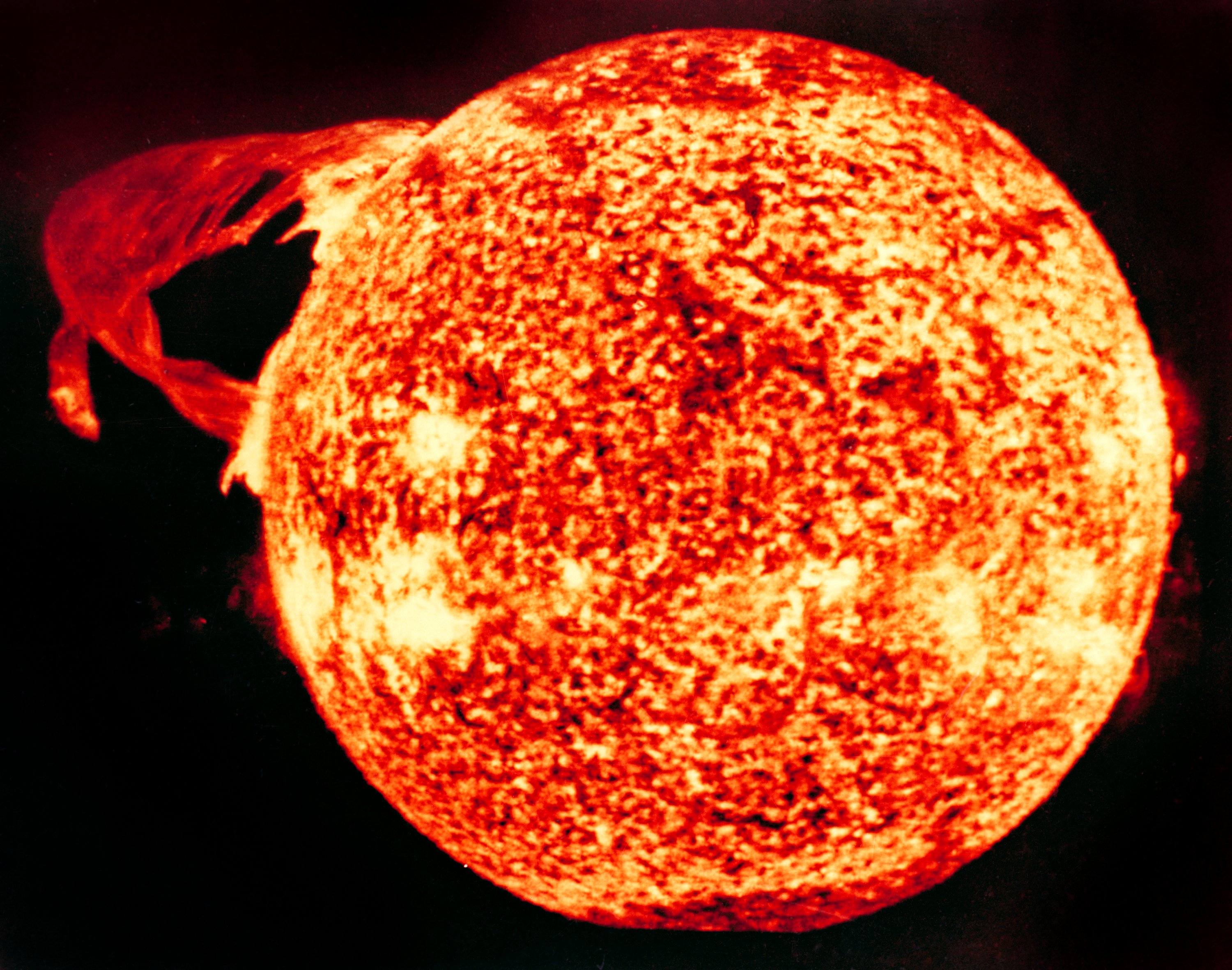Solar cycle 20 on:
[Wikipedia]
[Google]
[Amazon]
 Solar cycle 20 was the twentieth
Solar cycle 20 was the twentieth
During the minimum transit from solar cycle 20 to 21, there were a total of 272 days with no sunspots.Spotless Days.
Solaemon's Spotless Days Page.
Comparison with other cycles shows that geomagnetic activity during the declining phase of cycle 20 (1973–1975) was unusually high. Data from solar cycle 20 was used to build the K-1974 Solar particle event, solar proton
 Solar cycle 20 was the twentieth
Solar cycle 20 was the twentieth solar cycle
The solar cycle, also known as the solar magnetic activity cycle, sunspot cycle, or Schwabe cycle, is a nearly periodic 11-year change in the Sun's activity measured in terms of variations in the number of observed sunspots on the Sun's surfa ...
since 1755, when extensive recording of solar sunspot
Sunspots are phenomena on the Sun's photosphere that appear as temporary spots that are darker than the surrounding areas. They are regions of reduced surface temperature caused by concentrations of magnetic flux that inhibit convection. Sun ...
activity began. The solar cycle lasted 11.4 years, beginning in October 1964 and ending in March 1976. The maximum smoothed sunspot number
The Wolf number (also known as the relative sunspot number or Zürich number) is a quantity that measures the number of sunspots and groups of sunspots present on the surface of the Sun.
History
Astronomers have been observing the Sun recordi ...
observed during the solar cycle was 156.6 (November 1968), and the starting minimum was 14.3.SIDC Monthly Smoothed Sunspot Number.During the minimum transit from solar cycle 20 to 21, there were a total of 272 days with no sunspots.Spotless Days.
Solaemon's Spotless Days Page.
Comparison with other cycles shows that geomagnetic activity during the declining phase of cycle 20 (1973–1975) was unusually high. Data from solar cycle 20 was used to build the K-1974 Solar particle event, solar proton
fluence
In radiometry, radiant exposure or fluence is the radiant energy ''received'' by a ''surface'' per unit area, or equivalently the irradiance of a ''surface,'' integrated over time of irradiation, and spectral exposure is the radiant exposure per un ...
model, used for planning space missions during solar cycle 21
Solar cycle 21 was the 21st solar cycle since 1755, when extensive recording of solar sunspot activity began.Kane, R.P. (2002).Some Implications Using the Group Sunspot Number Reconstruction. ''Solar Physics'' 205(2), 383-401. The solar cycle last ...
.
August 1972 solar storm
An extremely activeactive region
An active region is a temporary region in the Sun's atmosphere characterized by a strong and complex magnetic field. They are often associated with sunspots and are commonly the source of violent eruptions such as coronal mass ejections and solar ...
, McMath 11976, produced a historic series of solar flare
A solar flare is an intense localized eruption of electromagnetic radiation in the Sun's atmosphere. Flares occur in active regions and are often, but not always, accompanied by coronal mass ejections, solar particle events, and other solar phe ...
s and coronal mass ejection
A coronal mass ejection (CME) is a significant release of plasma and accompanying magnetic field from the Sun's corona into the heliosphere. CMEs are often associated with solar flares and other forms of solar activity, but a broadly accepted ...
s (CMEs) in August 1972. One CME traveled to Earth in a record low of 14.6 hours and produced a strong geomagnetic storm
A geomagnetic storm, also known as a magnetic storm, is a temporary disturbance of the Earth's magnetosphere caused by a solar wind shock wave and/or cloud of magnetic field that interacts with the Earth's magnetic field.
The disturbance that d ...
that caused widespread electrical and communications grid disturbances and the accidental detonation of numerous U.S. Navy magnetic sea mine
A naval mine is a self-contained explosive device placed in water to damage or destroy surface ships or submarines. Unlike depth charges, mines are deposited and left to wait until they are triggered by the approach of, or contact with, any ve ...
s in North Vietnam
North Vietnam, officially the Democratic Republic of Vietnam (DRV; vi, Việt Nam Dân chủ Cộng hòa), was a socialist state supported by the Soviet Union (USSR) and the People's Republic of China (PRC) in Southeast Asia that existed f ...
.
See also
*List of solar cycles Solar cycles are nearly periodic 11-year changes in the Sun's activity that are based on the number of sunspots present on the Sun's surface. The first solar cycle conventionally is said to start in 1755 when Rudolf Wolf began extensive reporting o ...
References
Solar cycles {{sun-stub